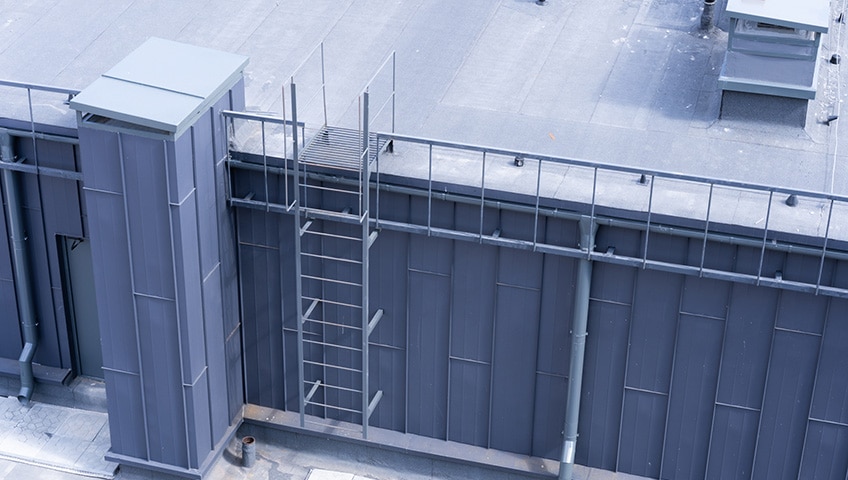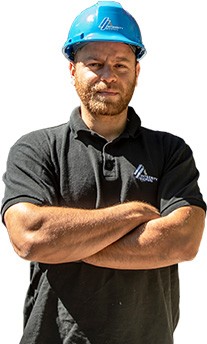
How Long Does a Commercial Roof Last?
June 5, 2021
Commercial Roofers in Toronto will tell you that many factors determine the duration of life your flat roof will enjoy. The Devil is always in the details, and for a commercial roof, it starts with materials. Once you have determined the materials are suitable, the workmanship to install the roof will be paramount to the life of a commercial flat roof. Roofing companies will tell you that many factors go into the timeline of a commercial flat roof. Care and regular maintenance will be necessary – if you are on top of the little things, you have nipped big problems in the bud. The type of roof you choose will come with a lifespan, and the cost is relative to the time the roof will last.
Common Factors That Affect the Lifespan of a Roof
Materials
- Metal
- EPDM – ethylene propylene diene monomer
- TPO – thermoplastic polyolefin
- PVC – polyvinyl chloride
- Asphalt
- Copper
Maintenance
Commercial roofing maintenance can be conducted in two different ways. First, reactive maintenance is done when problems are identified and work needs to be done. In general, it involves leaks, missing flashing, or ponding. Secondly, proactive maintenance starts with a plan incorporating regular inspections, regular roof cleanings, and minor repairs as discovered through examinations or cleanings.
Workmanship
Workmanship is a professional stamp on the work you do. It requires superior attention to detail and execution of the task at hand. That creates the best practices in the roofing industry when installing the materials to create longevity. You can have the best roofing system in the world, but if roofing guidelines aren’t followed, it is a problem. When poor installation, incorrect installation, or sloppy installation practices have been used, the roof won’t be worth a thing.
Weather
The weather can have a considerable impact on any roofing system. Once a roof has been damaged, degradation follows. At this point, it is best to get any repairs done and start a preventative maintenance routine. A common example of weather-related damage is when water freezes onto a roof, adding weight and creating openings. As it gets warmer, the water will begin to leak into the damaged areas. Leaks are hard to detect until they happen, which is why it can be helpful to get regular roof inspections.
Roof Type
You need the right roof for your needs. If you purchase a roofing system that isn’t compatible with your structure or location, it can result in excessive repairs and maintenance work. In the commercial roofing sector, three types of roofing systems are used: a flat roof, a low-sloped roof, and a pitched roof. Your roofer will be able to assess your needs and suggest which system is best for you.
Roof Slope
Typically, the flatter the roof, the harder it is to drain water. The water, instead, will flow to the lowest point on the roof and stay there until it dries or begins to seep into your structure. If your roof does not have the correct slope, you will likely experience more pooling and additional water-related damage.
Ventilation
Proper ventilation is essential to eliminate humidity and the build-up of warm, moist air in the attic. If moisture isn’t prevented from accumulating, you can see high levels of mould.
Typical Lifespan of Different Roofing Types
Metal Roofing
A metal roofing system will hold a lifespan of 50-years or more when installation guidelines are followed. It has long been a staple in the roofing business, having been used in ancient castles and other medieval structures. They provide excellent value for a building operator who sees longevity as the key to a solid roofing system.
Modified Bitumen
The modified bitumen roofing system will provide coverage for 10-20-years, and it is an economical solution for strained maintenance and repair budgets. Due to the nature of this roofing system, it requires little to no maintenance. Modified bitumen is one of the most selected materials for flat or very low slope roofing systems. It is also flame retardant, increasing its safety. At its core, a modified bitumen roof is asphalt-based, can be applied cold or hot, and is the modern version of a built-up roofing system.
EPDM
EPDM (Ethylene Propylene Diene Monomer) roofing is good for five decades. A membrane system will hold many advantages for a commercial structure that needs a high-quality roofing solution. It is made from an industrial-grade synthetic rubber that provides the strength and durability that a roofing system needs. It will expand and contract when temperatures change and won’t put extra stress on the roofing system in various weather conditions.
Spray Foam Insulation
Spray foam insulation will last a lifetime and then some. It is the ultimate answer to any roofing problem. Filling holes, cracks, and crevices while reinforcing your structure is what makes this system great. It works as another layer of protection for your roofing system and prevents heat leaks which can increase your energy bill. Foam is a light material and malleable during the installation phase, so it can be used for a variety of applications.
TPO
TPO (Thermoplastic Polyolefin) roofing will provide a service life of 50-years. Another membrane solution that has applications all across the roofing spectrum, and you can’t go wrong with this system. It is made from a combination of polypropylene and ether polypropylene rubber as the base material for the membrane. It is a dependable alternative to building operators who seek a new roof on a budget.
PVC
PVC (Polyvinyl Chloride) roofing will last for upwards of 30 years. It is best used for flat or low-sloped roofs, and it is highly reflective to combat the sun’s UV rays. Cool roof pigments, UV stabilizers and other proprietary materials add to the durability and strength of this roofing system.
Asphalt
In general, a properly installed and maintained asphalt roofing system will last for at least 30 years. A reputable roofing contractor should be hired to install the roofing system to ensure it has the correct amount of ventilation. It is also important to consider the direction your asphalt roofing system faces.
BUR
A built-up roofing system typically carries a lifespan of 20-30 years. It is applied as a layering of hot asphalt and other materials, then built up to create a watertight membrane. This roofing system has been in use for over 200 years, and it was designed with flat roofs in mind.
Call the Experts for Commercial Flat Roof Repairs or Replacement
A commercial building owner can eliminate their roofing concerns when they bring their questions to us at Integrity Roofers. Our goal is the same as any building owner. Identify problems, create solutions that are timely and inexpensive through a proactive approach to roofing maintenance. Let us help you remove the issues and generate answers to your roofing problems with a consultation and inspection of your facility. For a professional estimate that will act as a guideline to prosecute your roofing problems, call our office today at Integrity Roofers at 647.953.9365.



















